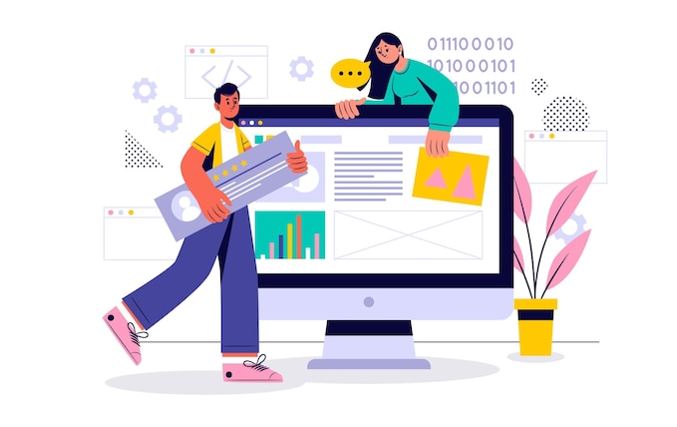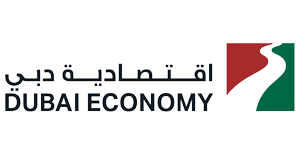Do you recall the interface of Windows 8? The buttons highlighted the vivid tiles and simplicity in an elegant, minimalistic manner. This is essentially the essence of flat design.
Introduced in 2012, flat design in digital products remains in high demand today, offering a departure from the realistic look of skeuomorphism. Its ongoing appeal stems mostly from its ability to reduce distractions and improve page load speeds. Flat design focuses on essentials, creating a clean, uncluttered space that guides users seamlessly through the interface. If you are looking for some trending design ideas, contact the experts of Dubai Web Designer and get the latest updates.
Today, our discussion centers on flat design and its significance in UI/UX.
What is Flat Design in UI/UX?
A simple approach to creating digital user interfaces, including websites and mobile apps, is flat design. It emphasizes cleanliness and simplicity, employing uncomplicated elements, typography, and flat colors. The goal is to convey information efficiently while ensuring a visually appealing and user-friendly experience.
With a flat design, you achieve a clutter-free appearance devoid of elaborate decorations or 3D effects.
With roomy layouts, crisp lines, vibrant colors, and two-dimensional graphics, the flat style gives information a contemporary and useful presentation. Although some contend that the lack of 3D effects somewhat detracts from its intuitiveness, its elegant and practical design keeps it a popular option.
Flat design has evolved from being a trend to becoming a fundamental element in web design, driven by its ability to seamlessly blend aesthetics with functionality, catering to the ever-changing needs of users and businesses alike.
First and foremost, a flat design website contributes to improved user experience by prioritizing simplicity and clarity. In the modern world of short attention spans, people value an interface that is clear and simple. Flat design, with its two-dimensional elements, bold typography, and minimalistic approach, ensures that visitors can quickly navigate through the website, absorbing information without unnecessary distractions. This streamlined experience fosters positive user interactions and can be a key factor in keeping visitors engaged.
Furthermore, the responsiveness of flat design is crucial in today’s diverse device landscape. Since people visit websites from a variety of devices, including desktop computers, tablets, and smartphones, it is essential to have a design that adjusts to numerous screen sizes without any issues. Businesses may develop websites that look good and provide a consistent, user-friendly experience across devices by focusing on functionality with flat design.
Importantly, the speed and efficiency associated with flat design align with the contemporary emphasis on fast-loading websites. The reduction of unnecessary elements, shadows, and complex graphics translates into quicker page load times. In the modern age of immediate gratification, having a website load quickly not only increases customer pleasure but also has a beneficial effect on search engine results, which enhances visibility and discoverability.
Characteristics of Flat Design
Flat design, introduced to enhance responsiveness across various screen sizes, incorporates the following characteristics:
- Two-dimensional elements: Simple, two-dimensional elements skip shading and detailing for a minimalist design.
- Minimalism: Bold, highly readable typography, clear visual hierarchy, and simplicity of shapes and elements contribute to a clean and ordered design.
- Functionality: Designers focus on creating functional tools rather than purely aesthetic elements, delivering information quickly and efficiently.
- Bright, high-contrast colors: Vibrant colors create a modern and digital-friendly aesthetic.
Why is Flat Design Important?
Flat design offers various benefits for websites, contributing to improved readability, reduced distractions, faster page load times, enhanced functionality and efficiency, and SEO friendliness.
- Improves Readability: Stripping away fancy extras and employing vibrant colors enhances readability by allowing users to focus on content without unnecessary distractions.
- Removes Interruption: By keeping the design clean and straightforward, flat design helps users concentrate on essential content without being overwhelmed by visual effects.
- Reduces Page Load Time: Simplifying the design and minimizing data load contribute to faster page load times, positively impacting conversion rates.
- Enhances Functionality and Efficiency: Clear design and readability create a smoother user experience, allowing users to navigate tasks efficiently.
- Makes Websites SEO-Friendly: The simplicity and speed of flat design make websites more visible and user-friendly, contributing to improved SEO rankings.
Drawbacks of Flat Design
Despite its positive aspects, flat design has drawbacks, including being less intuitive, lacking distinctiveness, limiting color and typography choices, and potentially hindering the detection of clickable elements.
Is Flat Design 2.0 a Better Solution?
Experts suggest that Flat Design 2.0 improves upon its predecessor by adding subtle shadows, highlights, and layered elements for enhanced usability and a more refined, user-friendly experience.
Conclusion
Flat design’s beauty lies in its simplicity, offering a contemporary and neat appearance. While some see simplicity as a potential drawback, it’s essential to prioritize usability and usefulness in designing a well-crafted product. Whether to choose the flat design, its newer version or another style ultimately depends on your specific website needs. You can get in touch with Saad Ashraf for more information.







